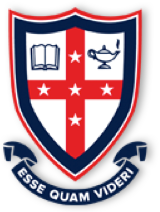Stories
Geoffrey “Bing” Carroll (OC 1923), Old Boy and Teacher, 1926–1933
Looking back on their time at Cranbrook in the first decades of the twentieth century, our school’s earliest students fondly painted some humorous character sketches of their former teachers.
Robert Penzer recollected "Skully Mell", a French and English teacher who “didn’t have a hair on his head”, so that “even the flies” venturing into the classroom “had a slippery landing”.1 Meanwhile, Barry Chard best remembered Mr Brighton, a “military type” who served during WWI.2 He reflected that Brighton was “meticulously neat in his dress” and “had a little moustache and clipped way of talking”.3 Sir David Griffin recalled enduring an “imposter” Latin master, Barney Flook. David’s mother, “who, of course, was an absolute expert [and] spoke Latin fluently”, called Mr Flook out when she “realised he didn’t know what he was really talking about” and the teacher left the school soon afterwards.4
A teacher who frequently appears in the stories of former students is the resident housemaster Geoffrey “Bing” Carroll. Geoffrey was a Cranbrook student himself from 1919–1923 and excelled at sport. He was captain of the 1st XV rugby team, the 1st XI cricket team, the tennis team, and a winning track athlete in the 220 yards.5
In 1926 Geoffrey returned to Cranbrook to teach football, cricket, chemistry, and mathematics.6 He had gained two years’ teaching experience at Mosman Preparatory School. While Barry Chard recalls Mr Carroll as a “pretty fiery sort of a character” who “used to yell at the boys a lot”, most Cranbrookians have fond memories of him.7
For Richard Foster, Bing was a “very likeable man”, who was “looked up to and respected by the boys”.8 Errol Bode cites Mr Carroll as “one of those that I followed, as a sort of role model”, “very boyish” (having only just left school himself), with “a most comradely air, but you never intruded upon it”.9 Robert Penzer reflects that while “the little kids reckoned [Bing] was a tough master”, he always “used to get on very well” with the man.10
Unfortunately, Geoffrey’s teaching career at Cranbrook ended in 1933. This was a difficult time for our nation and our school as we struggled through the Great Depression. The construction of the Harbour Bridge kept some off the street, but almost 32 per cent of Australians were out of work at time of its opening in 1932.11 Working class children were consistently leaving school at 13 or 14 years old and, although it was an independent school, Cranbrook experienced a significant drop in enrolments.12
These circumstances contributed to Geoffrey’s departure in 1933, but a change in teaching standards also informed the decision.13 During his eight and a half years of service, Geoffrey taught many subjects, was a resident master and then a housemaster until his marriage. He coached cricket and rugby and spent time as the Sports Master. At the time of his departure from Cranbrook, he worked primarily with Form IV and the Remove year (the equivalent of Year 7 today). It is clear from the farewell printed in The Cranbrookian of December 1933 that his efforts were always appreciated.
On 1 September 1933, he married Muriel Durance at St Mark’s Church and Reverend FT (“Polly”) Perkins officiated.14
The last record we have of Geoffrey is from the 1937 electoral roll. Here, Geoffrey was living with his wife Muriel at Muston Street in Mosman and he described himself as a "salesman" – we can only assume that sales were low at this dark period in Australia’s history.
- 1. Extracts from Oral History Project (1993 - 1995).
- 2. Ibid.
- 3. Ibid.
- 4. Ibid.
- 5. Cranbrook School Magazine (various).
- 6. The Cranbrookian, Vol 7 No I, 7.
- 7. Extracts from Oral History Project (1993 - 1995).
- 8. Ibid.
- 9. Ibid.
- 10. Ibid.
- 11. "The Great Depression", Australian Government http://www.australia.gov.au/about-australia/australian-story/great-depre....
- 12. Erik Eklund, "10 June 1931", Swinburne University of Technology, http://insidestory.org.au/10-june-1931.
- 13. The Cranbrookian, Vol 16 No 2, 4-5.
- 14. The Cranbrookian Vol VII no I, page 7.

